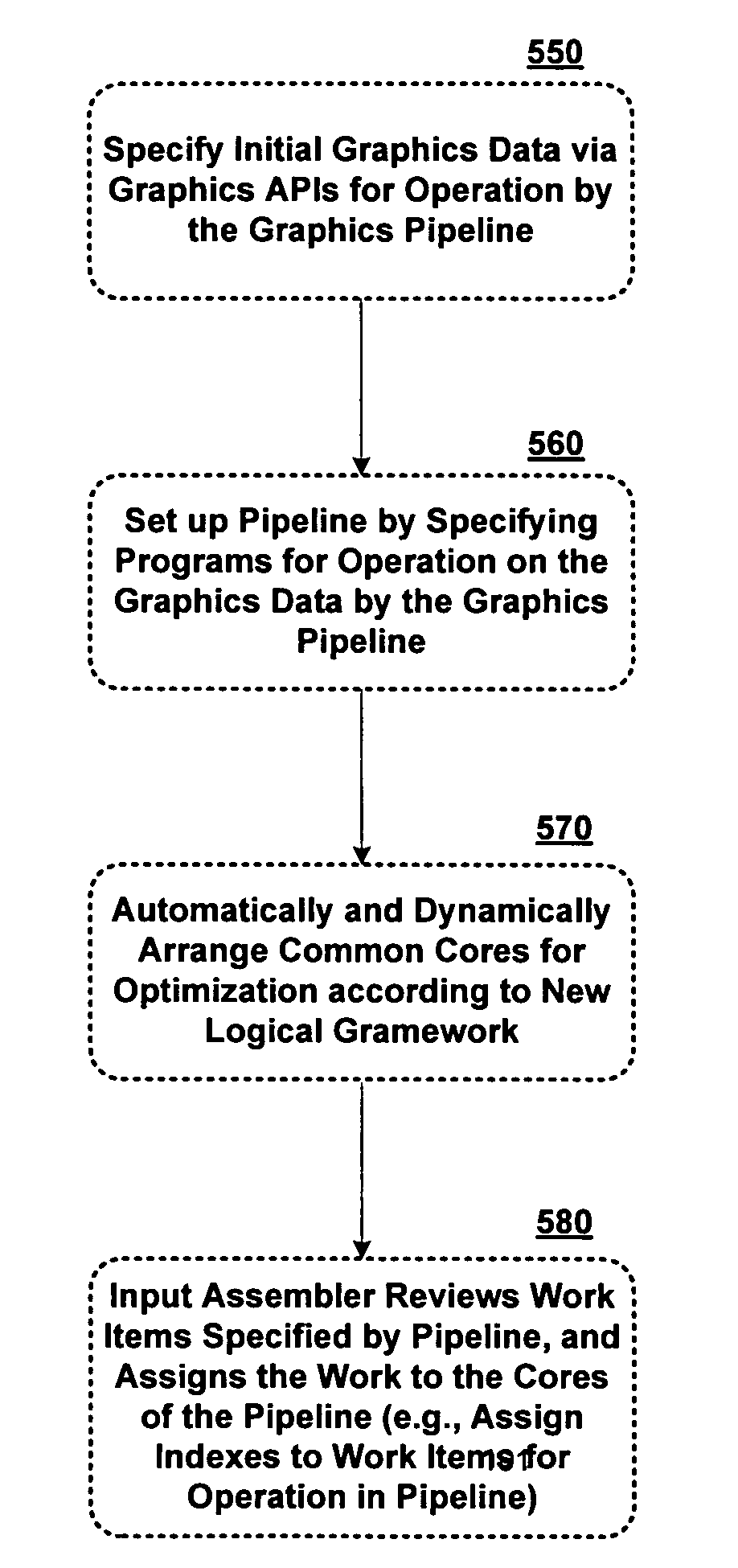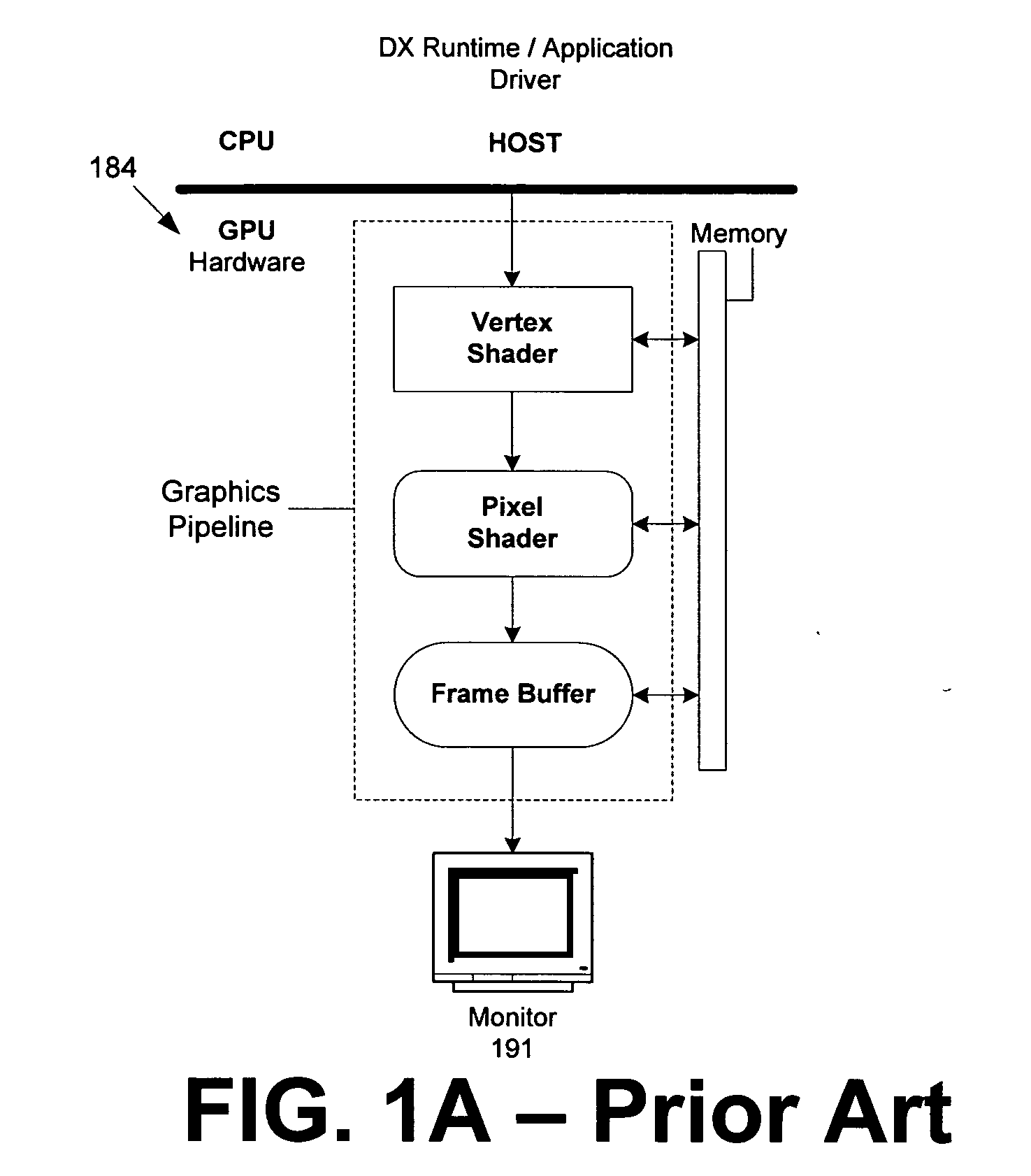Systems and methods for providing an enhanced graphics pipeline
a graphics pipeline and enhanced technology, applied in the field of systems and methods for providing enhanced graphics pipelines, can solve the problems of not being able to read the intermediate storage of video memory, the output of tessellators, vertex shaders and pixel shaders may never reach video memory, and the use is limited
- Summary
- Abstract
- Description
- Claims
- Application Information
AI Technical Summary
Benefits of technology
Problems solved by technology
Method used
Image
Examples
Embodiment Construction
Overview
[0048] As mentioned, the present invention enhances a graphics pipeline by adding greater functionality to present hardware by using a dynamically configurable common shader core for pixel shaders, vertex shaders, and geometry shaders. The common shader core allows simplified optimization as identical hardware units for the different shaders provide load balancing by reconfiguring, or disabling a shader as part of the pipeline when it is not needed, thus freeing up resources for stages that remain active. The invention introduces a geometry shader which can operate on primitives including points, lines, and triangles, and advantageously, new geometry can be generated inside the pipeline by a tesselator operating in one of a limited number of pre-set modes, or relatively arbitrarily by a programmable geometry shader. Another embodiment of the invention includes a stream output where primitive data can be streamed out to a buffer for re-use elsewhere in the pipeline, enablin...
PUM
 Login to View More
Login to View More Abstract
Description
Claims
Application Information
 Login to View More
Login to View More - R&D
- Intellectual Property
- Life Sciences
- Materials
- Tech Scout
- Unparalleled Data Quality
- Higher Quality Content
- 60% Fewer Hallucinations
Browse by: Latest US Patents, China's latest patents, Technical Efficacy Thesaurus, Application Domain, Technology Topic, Popular Technical Reports.
© 2025 PatSnap. All rights reserved.Legal|Privacy policy|Modern Slavery Act Transparency Statement|Sitemap|About US| Contact US: help@patsnap.com



